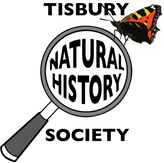|
One of my schoolteachers used to say that if you could cover 20 daisy flowers in the lawn with one foot, it must be summer. We used to think that her summer always came a good couple of weeks earlier than ours.
There are thousands of plants in the daisy family – the Asteraceae – the name derived from the Latin for star, aster. The flowers have an easily recognisable star shape. Actually, the flower head isn’t a single flower but lots of tiny ones making up the central disc (‘disc florets’) and the surrounding ‘ray florets’ which we think of as petals. This multiplicity of flowers means that daisies are good nectar sources and are consequently attractive to pollinating insects. The word daisy comes from the Old English of daeges eage, which means day’s eye, referring to the way the flower opens in the morning and closes at night. The symmetrical daisy flower is easy to draw so the daisy wheel is a common apotropaic sign that used to be inscribed onto the walls or beams of buildings to ward off evil (Messums barn, for example) and is now the new logo for the local Stone Daisy Brewery. The daisy with which we are probably most familiar is the common, lawn or English daisy that we’ve all used for making daisy chains. Some gardeners see the plant as a weed, but others love to see the flowers dotting the lawn. It can grow in wide range of soils, even compacted, and spreads by both seed and underground runners. Another common species is the much taller ox-eye daisy, often seen in meadows and hedge banks. This is our largest native daisy, a resilient perennial that sheds masses of seeds, it spreads easily and forms impressive stands quite quickly. In contrast to the common daisy, the flowers do not close at night and may glow in the dusk leading some to name it the moon daisy. The flowers are attractive to bees, butterflies, and beetles. Both daisy species are used for the petal-picking romance prediction game of ‘loves me; loves me not’. As well as several other wild daisy species, there are numerous daisy varieties which have been bred for our gardens such as Shasta Daisies, Michaelmas Daisies, and Marguerites. Most are attractive to insects so should not be overlooked because they are ‘just a daisy.’ by Andrew Graham Comments are closed.
|
Photo: Avocets (Izzy Fry)
The headers display photos taken by our members. Do get in touch via the Contact Form if you'd like to submit a photo for selection.
Archives
May 2024
Categories
All
|

 RSS Feed
RSS Feed